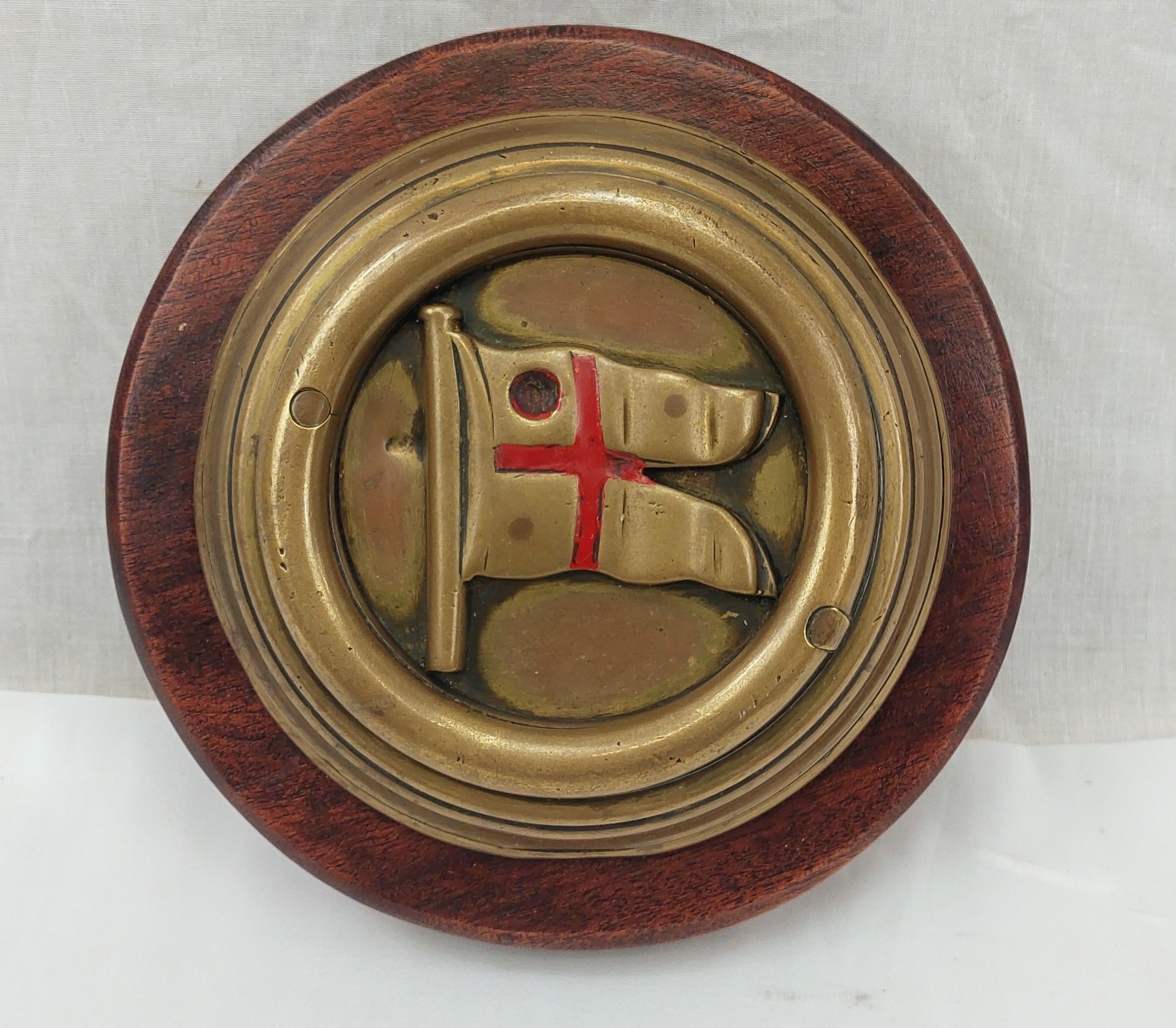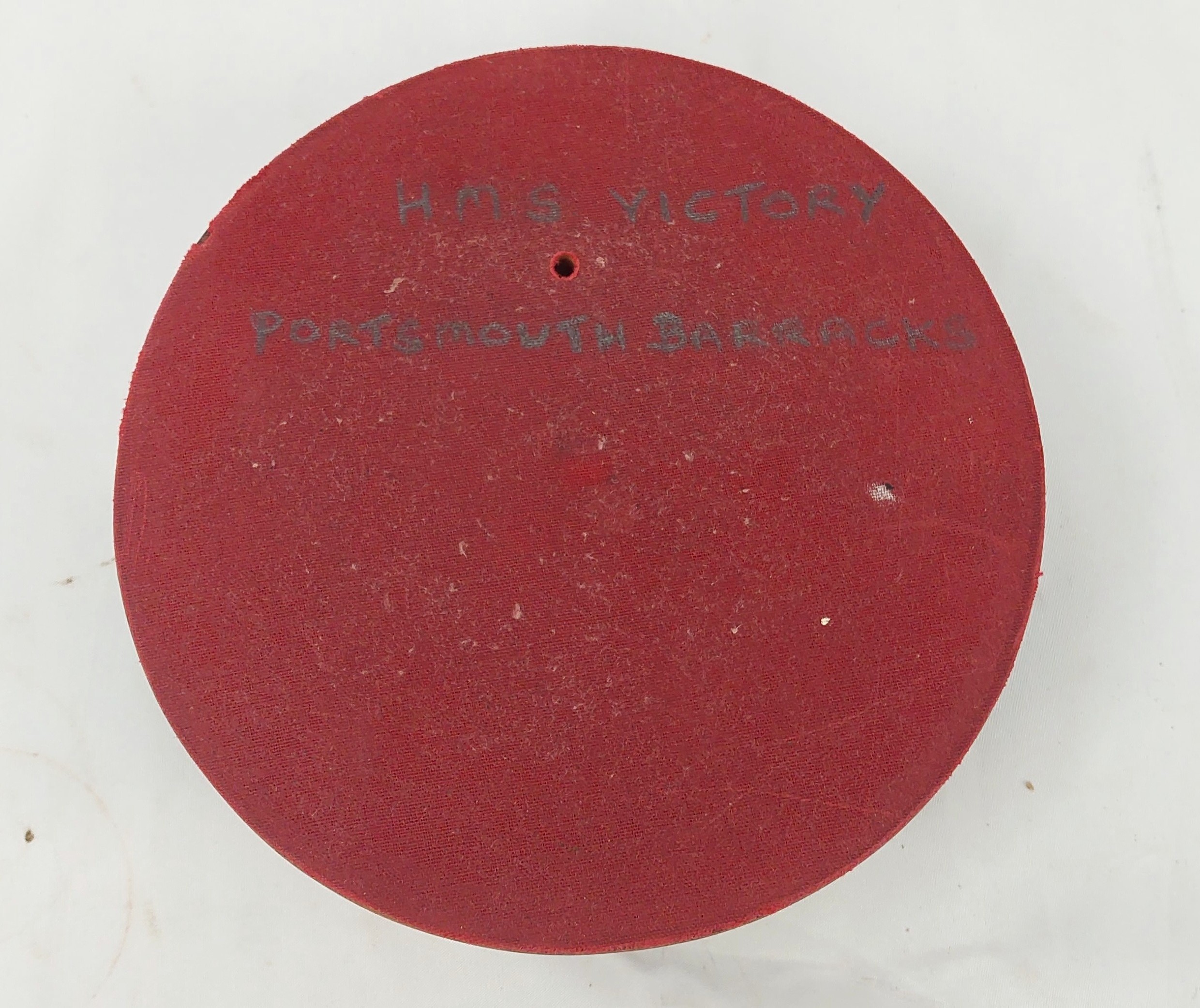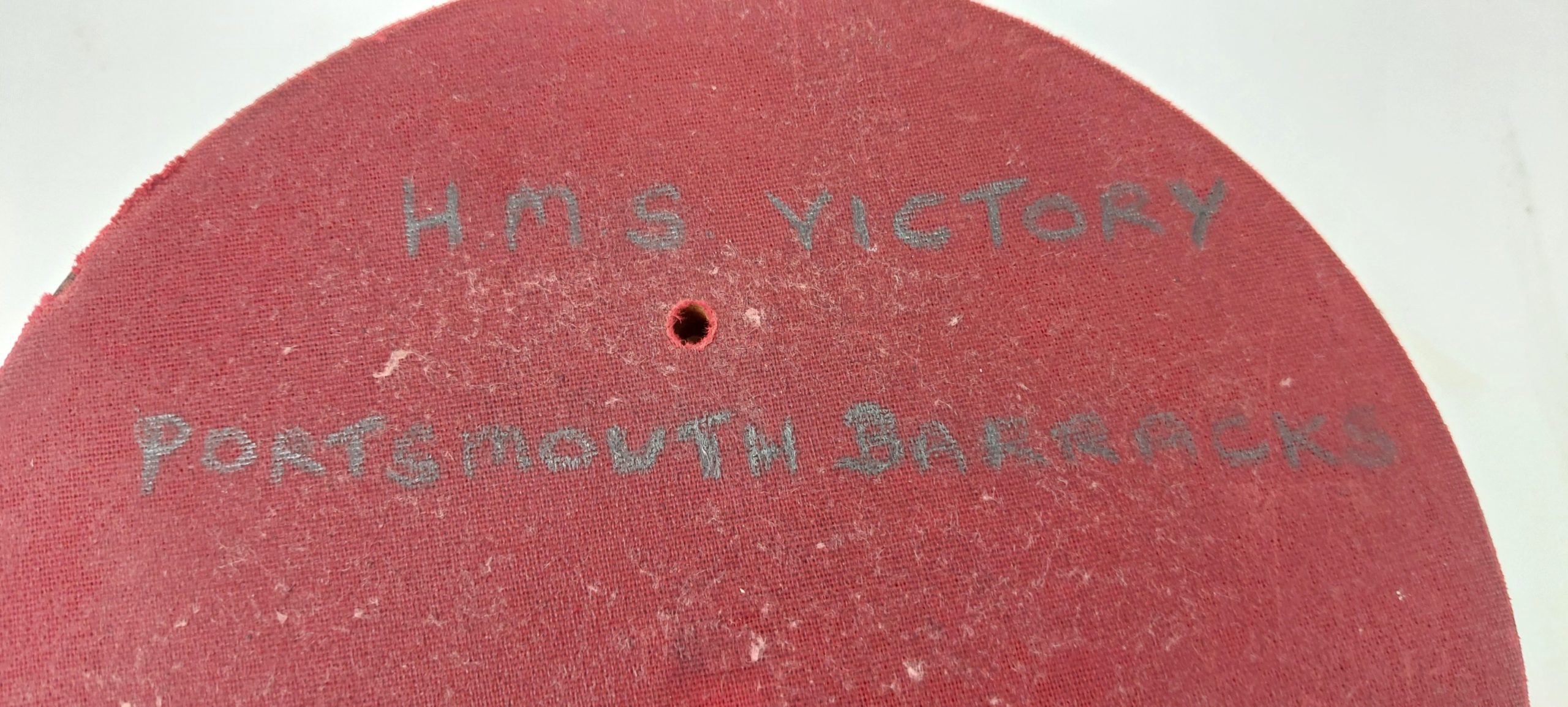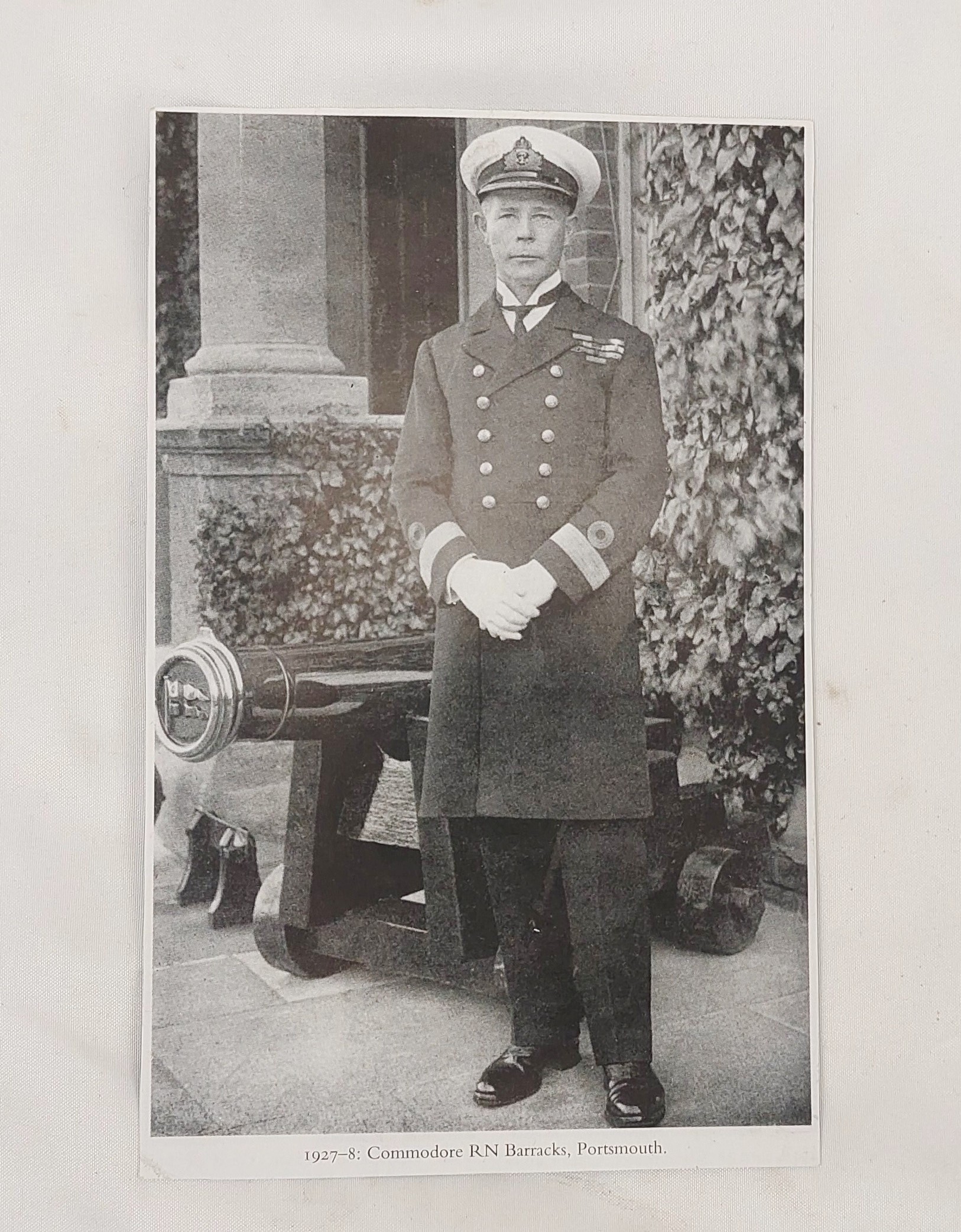~ Bronze HMS Victory Portsmouth Barracks Cannon Tompion ~
The tompion, a gun muzzle cover, bears the English flag and is mounted on a wooden backing board. It comes with a photocopy of a photograph showing it in situ with the base commander in the late 1920’s.
~ HMS Victory Portsmouth Barracks ~
The Barracks, which were commanded by a Commodore, were used for a number of purposes:
Accommodation for men awaiting a draft to a ship, and undergoing courses in the dockyard etc.
Accommodation for men serving on board ships undergoing major refit in the dockyard, when accommodation on board was unusable.
As one of the entry points into the Royal Navy ; and one of the departure points back into Civvy Street.
The Barracks, under the guise of HMS VICTORY and VICTORY IV, and other extensions to this, see also next item, provided an administration organisation for ships and establishments which were too small to provide their own e.g. at one time or another these have included the Physical Training School at Pitt Street, and the Portsmouth Squadron.
Over the years, especially during war-time, other accounting depots using the Victory name (ranging from HMS Victory II – Victory XI) were set up around the country.
There was also a time when the RN Barracks had its own Guard and Blue Jacket Band, and where the Portsmouth Field Gun Crews, having completed their basic training at HMS Excellent, practiced for the Royal Tournament.
A part of the Barracks was damaged during WWII and many men were accommodated in Victoria Barracks at Southsea, as were the WRNS, who were accommodated at Duchess of Kent Barracks.
On 28 Jan, 1907, The Times reported that a much-needed improvement has been made at the Royal Naval Barracks at Portsmouth. The canteen was formerly the only place in which the men could assemble in the evening, no separate room having been provided for those who wished to meet together for social intercourse without the added attractions of beer. A portion of the canteen has now been partitioned off, and forms a most comfortable restaurant, where good food, tea, coffee, and non-intoxicating drinks can be obtained. Books, papers, and periodicals also are provided. The room which forms the restaurant is at present only temporary, as it is proposed later on to utilize a much larger portion of the building for the purpose. The cost of fitting up this temperance restaurant has been defrayed from private sources.
And shortly afterwards, on 25 Feb 1907, The Times reported a new departure for the comfort and well-being of the men of the Royal Naval Barracks, Portsmouth, has taken place in the opening of a coffee bar and restaurant. The very large beer canteen, capable of seating over 1,000 men, has been divided, and by the means of panelling, mirrors, and decorations, a charming effect has been produced. A bright bar, with its silver urns and excellent comestibles, acts like a magnet, as is evidenced by the crowds of bluejackets that besiege it, and as the eye glances down the bill of fare one ceases to be surprised ; the menu shows along list of luxuries. Dinner consists of a good cut from ribs of beef, with vegetables, apple tart, and pudding of various kinds. Tea and coffee are always ready. The hot suppers are fish, liver and bacon, sausages, chops, steaks, &c., quickly and promptly served, and at remarkably low prices. A lounge for reading and smoking, fitted up with comfortable arm-chairs and couches, and the tables well supplied with papers and books is at one end, and is an exceedingly popular institution, and always well patronized. If these restaurants could be established and well worked at our great naval centres, there would be less leave-breaking and consequent punishment.
It maybe of interest to note that the Parade Ground, ie the large open space in front of the clock tower, was dug up during the early part of WWII and air raid shelters were built below ground level ; these were covered over, leaving access to the shelters, and the parade ground was then reinstated.
~ Condition ~
Please refer to the images. The piece is in excellent order.
~ Dimensions ~
The tompion is 15 cm (6 inches) in diameter with the backing board being 19 cm (7.25 inches). It weighs 2.4 Kg.
JA_7243121970






